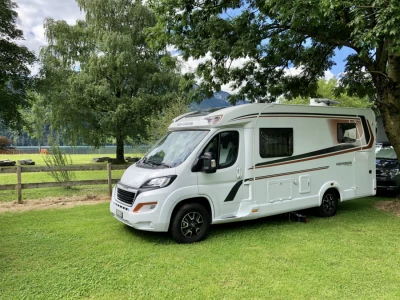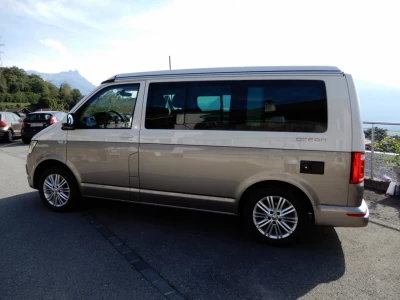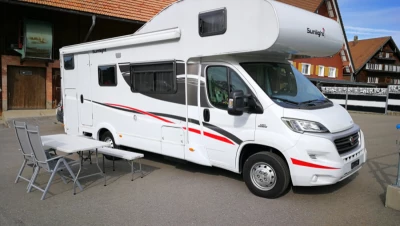Travel to Norway with motorhome or caravan
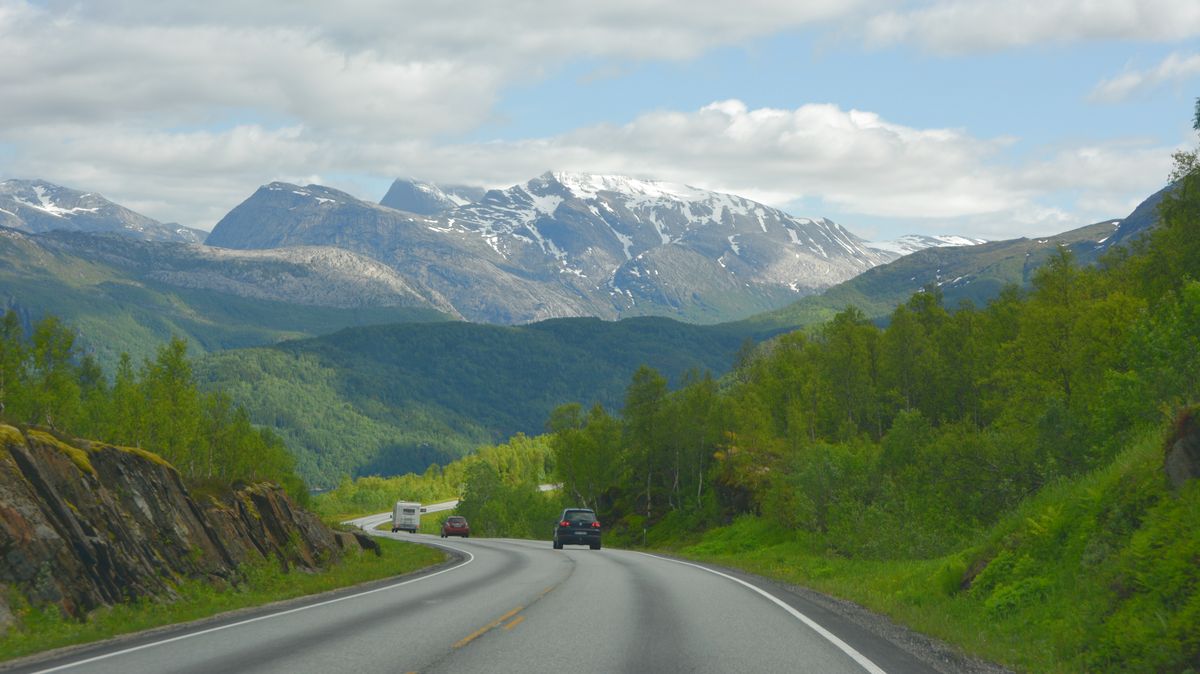
Norway is known for its dramatic mountains and scenic fjords. Traveling to Norway with a motorhome or caravan is a fantastic, and at the same time flexible way to experience this magnificent country. In this article, we go through what you need to think about before and during the trip.
Take the motorhome or caravan to Norway?
Many who have their own motorhome or caravan, or who rent a camping vehicle for the holidays, dream of Norway as a destination. Norway is popular as a camping country among other northerners, but also among, for example, Germans and Dutch. The country offers renowned beautiful nature, beautiful roads and many campsites.
Rent a motorhome or caravan in Norway
If you don’t have your own camping vehicle, you can get to Norway by car, or by a plane, and rent a motorhome or caravan on site. At MyCamper you can search and book camping vehicles that are rented out in Norway. When you do your search, you get all the bookable vehicles on a map, so you can choose a vehicle in a place that suits you.
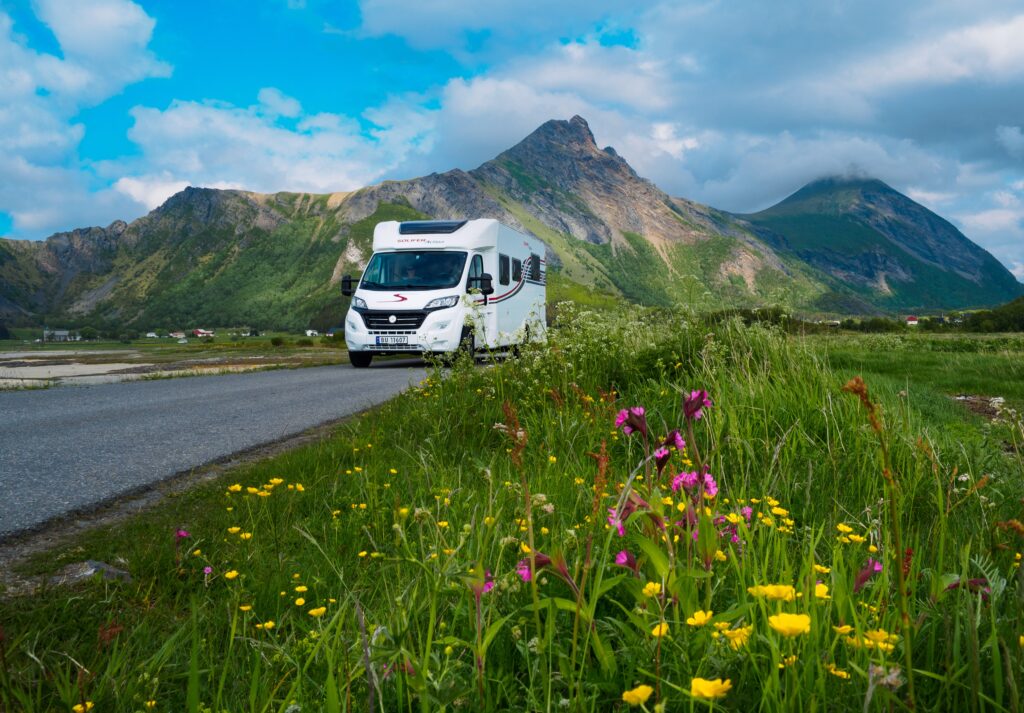
Entry rules in Norway
To travel into Norway, you need an approved entry document. If you are a Nordic citizen, a driving license or a national ID card issued in a Nordic country is sufficient. Svalbard is, however, an exception where Nordic citizens also need a passport. If you are not a Nordic citizen, a valid passport is required, and from some countries outside the EU / EEA also a visa. During the pandemic, you need to check if you also need covid evidence and / or negative covid test. You will find current information about the pandemic and trips to Norway at Visit Norway.
Please note that Norway is not a member of the EU. In addition to personal equipment for the trip, you can take goods worth NOK 6,000 with you duty free. This may include a maximum of 10 kg of food and limited amounts of alcohol and tobacco. You can see the exact quantities you may enter with on the Norwegian Customs website. Below you can see an example of a fee-free quota. Note that if you, for example, choose not to bring strong alcohol, you can bring a slightly larger amount of wine, etc.
- 1 liter of strong alcohol
- 1,5 liters of wine
- 2 liters of beer
- 200 cigarettes or 250 gram tobacco
Security and insurance
Norway is generally a safe and secure country to travel in, but as a traveler it is always important to keep track of the security situation and current events in the country you plan to visit. You can often find current information via your own country’s embassy in Norway.
Before you go abroad, it is also wise to review your insurance policies. Check both your own travel insurance (home insurance) and the motorhome’s insurance. If you rent a motorhome via MyCamper in a country other than Norway, you must also check that you are allowed to bring the rented motorhome to the country. This information can be found in the vehicle’s ad under “Rules”.
Cost of living in Norway
In Norway, Norwegian kroner (NOK) is used and the prices are relatively high. Prices in the capital Oslo can be compared with cities such as London, Paris and Singapore. Naturally, you who travel with a camping vehicle have many financial benefits, and can, for example, choose slightly cheaper overnight stays and to cook many meals in the motorhome or caravan.

If you want to witness Northern Lights in Norway, discover more about it in this article.
How to get to Norway by motorhome or caravan?
Traveling to Norway by motorhome or caravan can be an exciting adventure. Which road is best to take depends, of course, on where you live, but perhaps also on prices, what you want to see along the way and which parts of Norway you plan to visit.
To Norway from the rest of the Nordic region
If you travel from the rest of the Nordic region, you are relatively close to Norway. From Finland you can drive via the northern parts of the country, or take a ferry to Sweden, for example from Helsinki to Stockholm, and continue from there to Norway. From Denmark you can take a ferry from Copenhagen, Frederikshavn or Hirtshals (DFDS, Fjordline or Color Line).
To Norway from the rest of Europe
If you are starting your journey in a European country outside the Nordic region, there are many different itineraries to choose from. Ferries run between Kiel in Germany and Oslo in Norway (Color Line) and between Eemshaven in the Netherlands and Kristiansand in Norway (Holland Norway Lines). You can also drive to Denmark and take a ferry from there, or take a ferry from Germany to Sweden, and then continue from there to Norway.

Driving in Norway
The standard on Norwegian roads is generally good. Many roads, however, can be narrow and curvy, and sometimes really steep. There are plenty of tunnels and road ferries, and you have to be prepared to pay tolls for roads and ferries. If you visit Norway in the winter, it is good to know that some mountain roads may be closed.
In Oslo, temporary bans on diesel vehicles can be issued, if the particle levels in the air exceed a certain level. This doesn’t happen very often, but to be on the safe side, you can check the current rules for diesel vehicles in Oslo at Oslo municipality’s website.
Road tolls
In Norway, you have to pay tolls on certain roads. Motorhomes with a total weight of less than 3.5 tons pay as ordinary cars, while caravans over 3.5 tons have special rules. The system for charging tolls is called “AutoPASS” and the fee charged is called “bompenger”.
All toll stations in Norway are automatic. The easiest way is to register the vehicle in advance is on autopass.no. If you are traveling with a rented motorhome, you should check that the owner has registered the vehicle. If you drive past the toll booths without having registered your vehicle, invoices will be sent afterwards.
Ferries in Norway
All Norwegian road ferries are subject to a fee. Prices vary depending on the length of the trips and they were generally reduced by 30 percent on 1. of January 2022. To get a discount on the prices, you can establish an AutoPASS advance agreement and order an AutoPASS ferry card.
Another option is the payment solution FerryPay, which means that the cost is automatically deducted from the payment card that you registered with AutoPASS. This payment solution doesn’t provide a discount, but you avoid getting invoices. You can read more and establish agreements at autopassferje.no. Please note that the above payment solutions apply to the ferries that are connected to AutoPASS for ferries.
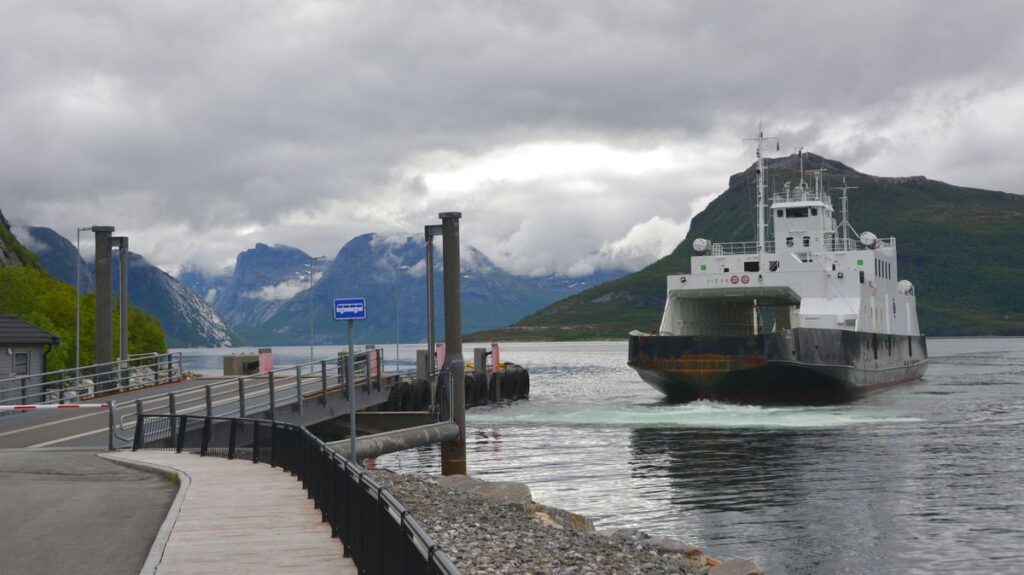
Speed limits
Passenger cars and motorhomes with a total weight of up to 7.5 tons may drive a maximum of 80 km/h on country roads and a maximum of 90, 100 or 110 on motorways depending on road sings. For caravans, a maximum of 80 km/h applies on both country roads and motorways. Note that there are plenty of speed cameras in Norway.
Driving license rules
New driving licenses (manufactured after 19. of January 2013) have the same appearance and content throughout the EEA. If the driving license is older, there may be differences in the form of transitional rules. In the EEA, however, your driving license has the same authorizations as at home, and this applies even to transitional rules. Here you can read more about driving license rules for motorhomes and caravans.
If you got a Swedish B driving license before 1. of July 1996, and it hasn’t been revoked, you may drive a motorhome heavier than 3.5 tons, provided that it is classified as a class II passenger car and not as a lorry. Even if Norway has other rules, you can drive according to the Swedish driving license rules. If you are stopped by the police, it may be a good idea to be able to show an equivalence table, which you can download from the Swedish Transport Agency’s website.

Campsites and motorhome stop sites in Norway
Campsites in Norway
There are over a thousand campsites in Norway and many are beautifully situated close to mountains, fjords, seas and lakes. Some are small and personal, while others are large and filled with lots of activities for children and adults. To find campsites that suit you, you can, for example, search via ACSI Eurocampings or at camping.no.
Motorhome stop sites in Norway
In addition to campsites, you can also find various stop sites for motorhomes in Norway, with or without service. One way to find stop sites is to look at the map on bobilplassen.no. You can also use different apps, such as “CamperContact” or “Park4Night”.
Wild camping in Norway
Wild camping is allowed in Norway as long as you stay at least 150 meters from inhabited houses, and it is also allowed to spend a night in your vehicle in a parking lot. Please note that there may be local regulations and prohibitions. In some tourist-dense areas, especially in Lofoten and northern Norway, there may be special restrictions on wild camping, especially in the summer. On these areas you may need to stay at a campsite.
When wild camping, avoid private and cultivated land. You must not litter and you are obliged to mind the nature around you. Here you can read more about wild camping.
Motorhome emptying stations in Norway
If you wild camp often or stay at motorhome stop sites without services, you may need to look for emptying stations to empty wastewater (gray water) and toilets (black water). In Norway, you can empty at certain petrol stations and environmental stations. Also, you can often drive to a campsite and empty for a fee. An overview of places to empty in Norway can you find at bobilplassen.no. You can read more about emptying and cleaning a motorhome or caravan in this article.

Do you want to know more about the nicest campsites for families in Norway? Read more about them in this article.
Norway’s national tourist routes
In Norway, there are 18 national tourist routes where you can experience art, architecture and design, together with dizzyingly beautiful nature. Along the routes you can look out over the fjords, mountains, waterfalls and glaciers, and it is often possible to stop at magnificent viewpoints. The routes run partly along the coast and partly among the mountains in northern, western and central Norway. You can find more information about tourist routes at Visit Norway.
What to see and to do in Norway
There is a lot to see and to do in Norway, and for many it is above all, the wonderful nature that attracts. You can hike, bike, try rafting or take part in experiences such as seeing the northern lights or the midnight sun. Here are some tips on popular and attractive destinations:
- Kristiansand and Sørlandet, Norway’s southernmost region, offers beaches, islands and coastal towns. Here is also the world’s largest underwater restaurant “Under”.
- Bergen and fjords on the west coast have both nature and culture to offer. In this area you can also find the famous cliff “Trolltunga”.
- Trollstigen is a 106 kilometer long stretch of road along steep cliffs, high waterfalls and deep fjords.
- Trondheim and Trøndelag attracts with outdoor life, pilgrimage routes to Nidarosdomen (Nidaros Cathedral), musk oxen, exclusive restaurants and UNESCO World Heritage Sites.
- Bodø is for you who want to experience a wonderful coastal town together with fishing, boat trips, and the world’s strongest tidal current.
- Lofoten is an incredibly popular destination with its high mountains, beautiful fjords and charming fishing villages.
- Tromsø is located in northern Norway and is a perfect place for you who dream of the northern lights, whale watching and midnight sun.
- Nordkap is a steep promontory furthest north in Norway. In the nearby Alta you can learn more about the Sami culture.
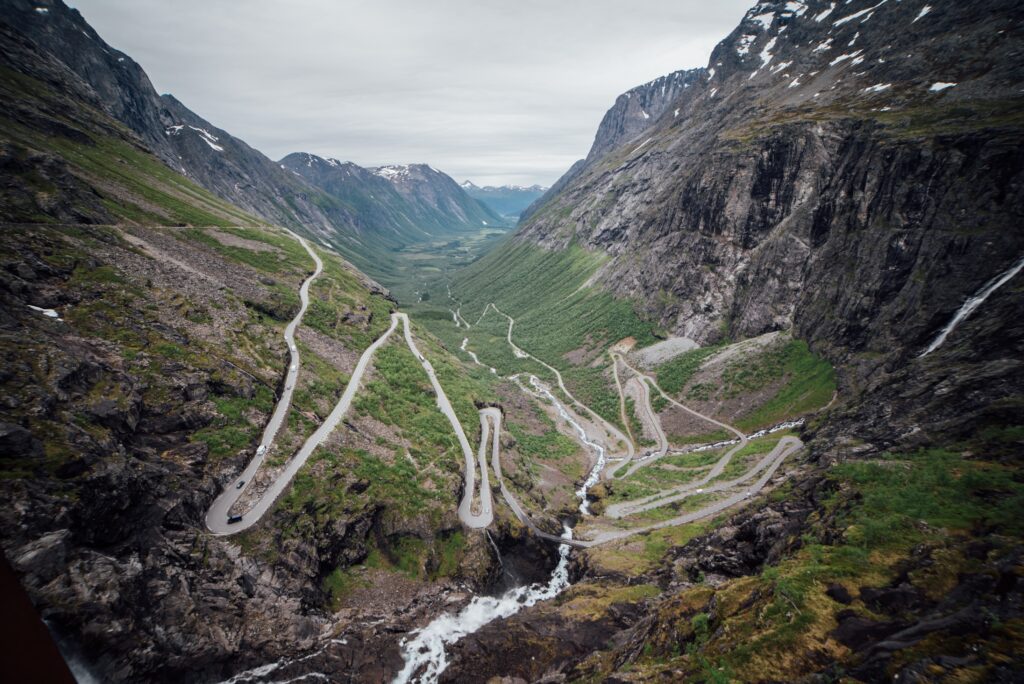
Do you need some inspiration for a road trip through Norway? In this article, you’ll find different routes for an unforgettable road trip through Norway!


